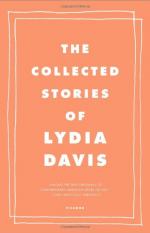
|
| Name: _________________________ | Period: ___________________ |
This test consists of 15 multiple choice questions and 5 short answer questions.
Multiple Choice Questions
1. What detail in the description of the man indicates how ill he feels?
(a) The sounds he is making.
(b) The color of his face.
(c) The smell coming from his skin.
(d) The way his ribs protrude.
2. What can be inferred about the woman from the description of the women who try to get her to sit down at their church?
(a) She is Jewish.
(b) She is White.
(c) She is not a Christian.
(d) She is not Black.
3. What denomination is the last church that the woman visits?
(a) Methodist.
(b) Congregationalist.
(c) Baptist.
(d) Episcopalian.
4. Where is the woman's landlady from?
(a) Jamaica.
(b) Trinidad.
(c) Cuba.
(d) Barbados.
5. What technique is used in the sentence: "Outside her apartment, the weather was changing: the wind rose, the branches swayed on the young trees, and the leaves fluttered" (19)?
(a) Juxtaposition.
(b) Non sequitur.
(c) Parallelism.
(d) Analogy.
6. What does the narrator say "usually promises to be interesting" (19)?
(a) A religious crisis.
(b) A flood.
(c) A death.
(d) A hurricane.
7. What detail in the description of the man's bedroom indicates how close the hurricane is getting?
(a) The flickering electricity.
(b) The windows rattling.
(c) The drawn blinds.
(d) The television weather forecast.
8. What does the hurricane do to the city in the woman's story?
(a) Produces winds that uproot trees and tear off several roofs.
(b) Passes by without actually striking the city.
(c) Drops large hail that smashes windows in buildings and in cars.
(d) Causes flooding that disrupts transportation.
9. What does the woman suspect that the man believes about his blasphemy?
(a) It is the reason she is angry at him.
(b) It caused his illness.
(c) It is no one's business but his own.
(d) It caused the hurricane.
10. Who is with the landlady when the landlady is talking about the mayor?
(a) The landlady's son.
(b) The main character.
(c) The mail carrier.
(d) No one.
11. In what religion are the High Holy Days a sacred time?
(a) Christianity.
(b) Islam.
(c) Hinduism.
(d) Judaism.
12. What technique is used in the sentence: "The story is flat and even, just as the earth seems flat and even when a hurricane is advancing over it" (19)?
(a) Allegory.
(b) Simile.
(c) Allusion.
(d) Personification.
13. What does the woman think might be preventing her from committing to a center for her story?
(a) Fear.
(b) Curiosity.
(c) Laziness.
(d) Hope.
14. Why does the main character find that the story she is working on is not an easy one to write?
(a) It is about friendship.
(b) It is about death.
(c) It is about fear.
(d) It is about religion.
15. For the majority of the story, what tone does the narrator adopt?
(a) Melancholic.
(b) Dismissive.
(c) Objective.
(d) Amused.
Short Answer Questions
1. How does the woman realize her study of religion has made her feel?
2. Who is "thinking of writing a letter to the President" (20)?
3. In the story's opening sentence, what is implied about the main character's writing?
4. Why was the woman reading the Bible during the period she writes about in her story?
5. Why does the man in the story feel so ill?
|
This section contains 567 words (approx. 2 pages at 300 words per page) |

|




